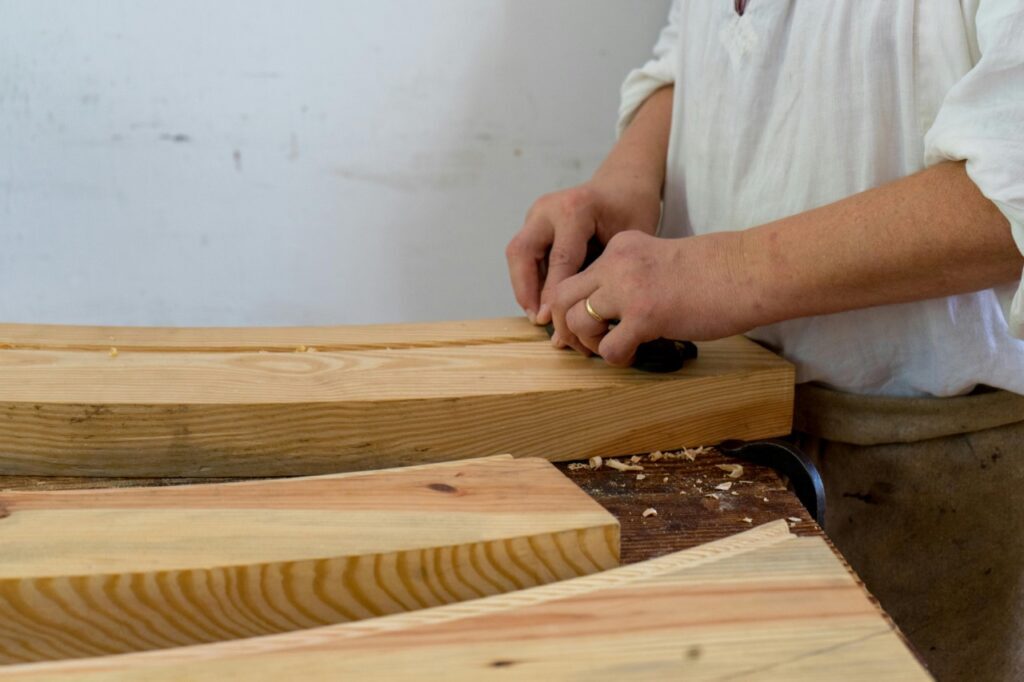
MDF is a durable and versatile material widely used in modern furniture and interior design. In this article, we will explore what MDF is, its types, properties, and areas of application in detail.
What is MDF?
MDF stands for "Medium Density Fiberboard." It is a composite material made by combining wood fibers with resin and compressing them under high heat and pressure. MDF is known for its smooth surface and homogeneous structure.
Properties of MDF
Key properties of MDF include:
Homogeneous Structure: The even distribution of wood fibers ensures a smooth surface, making it suitable for various applications.
Durability: MDF is resistant to impacts and deformations.
Easy to Process: It can be easily cut, drilled, and painted.
Cost-Effective: It is more affordable compared to natural wood.
How to Identify MDF?
To determine the quality of MDF, consider the following factors:
Density: High-quality MDF has a higher density and is heavier.
Surface Smoothness: A good MDF should have a smooth and even surface.
Edges: When cut, its edges should be even, and the fibers should be uniformly distributed.
What is MDF Made Of?
MDF is typically made from hardwood (oak, beech, etc.) or softwood (pine, spruce, etc.) fibers. These fibers are bonded with adhesive resins and pressed under high heat and pressure.
Types of MDF
Raw MDF
Raw MDF is the untreated version of MDF, used in furniture production, paneling, and decorative elements.
Laminated MDF
Laminated MDF is coated with melamine resin and comes in various colors and patterns. It has high durability and water resistance.
Moisture-Resistant MDF
This type of MDF is treated with water-resistant chemicals, making it ideal for humid environments such as kitchens and bathrooms.
MDF in Furniture
MDF is widely used in furniture production due to its durability and aesthetic appeal, making it a preferred material for various furniture designs.
Applications of MDF
MDF has a broad range of applications, including:
Furniture Production: Used in making tables, cabinets, and shelves.
Interior Design: Used for wall panels, doors, and ceiling decorations.
Packaging Industry: Used for special packaging boxes and crates.
Decorative Products: Used for frames, figurines, and decorative items.
Advantages of MDF
The benefits of MDF include:
Cost-Effective: More affordable than natural wood.
Aesthetic Appeal: Its smooth and uniform structure makes it ideal for painting and coating.
Eco-Friendly: It is recyclable and can be made from waste wood materials.
Variety: Available in different colors and patterns.
Alternatives to MDF
Alternatives to MDF include:
Particle Board: A more affordable option but less durable and harder to process than MDF.
Plywood: Offers high durability due to its layered structure but is more expensive.
Solid Wood: A natural and aesthetic option, but it is more expensive and harder to process compared to MDF.
Frequently Asked Questions (FAQ)
What is the difference between particle board and MDF?
Particle board is produced by pressing coarse wood chips, making it lighter and more affordable. MDF, on the other hand, is made from fine wood fibers bonded with resin under high pressure. As a result, MDF is denser, smoother, and more durable.
Which is better, particle board or MDF?
In terms of strength, surface quality, and ease of processing, MDF is better than particle board. However, particle board is cheaper and can be chosen for low-budget projects.
What is MDF, and is it high quality?
MDF (Medium Density Fiberboard) is an engineered wood product made from fine fibers. When properly processed and protected from moisture, it is considered a high-quality and long-lasting material.
Does MDF swell?
Standard MDF is sensitive to moisture and can swell if exposed to water for a long time. However, moisture-resistant MDF (often called green MDF) can be used safely in kitchens, bathrooms, and other humid environments.
Which is better quality, solid wood or MDF?
Solid wood is superior in terms of natural beauty and durability, but it is more expensive. MDF is easier to process, budget-friendly, and widely used in modern furniture production.
How can you identify real MDF?
Real MDF has a smooth, uniform surface. When cut, its internal structure looks compact and fiber-dense compared to particle board. High-quality MDF is often labeled with E1 or E0 formaldehyde emission ratings.
What is the difference between lacquer and MDF?
MDF is a board material, whereas lacquer is a finishing paint. Lacquered MDF means that an MDF board has been coated with lacquer paint, giving it a glossy and smooth surface.
Which type of MDF is the best?
The best MDF boards are those with low formaldehyde emissions (E1 or E0 grade). For special needs, moisture-resistant (green MDF) and fire-resistant MDF types are also considered high quality.
Where is MDF used?
MDF is commonly used in furniture manufacturing, kitchen and bathroom cabinets, doors, wall panels, and interior decorative designs. It is also a good base for laminates and paints.
How long does MDF last?
When used properly and kept away from excessive moisture, MDF furniture can last 10–20 years. With protective coatings or laminates, its lifespan can be extended even further.
MDF stands out as a versatile and advantageous material in furniture and interior design. With its various types and applications, it offers solutions that meet different needs and preferences.



